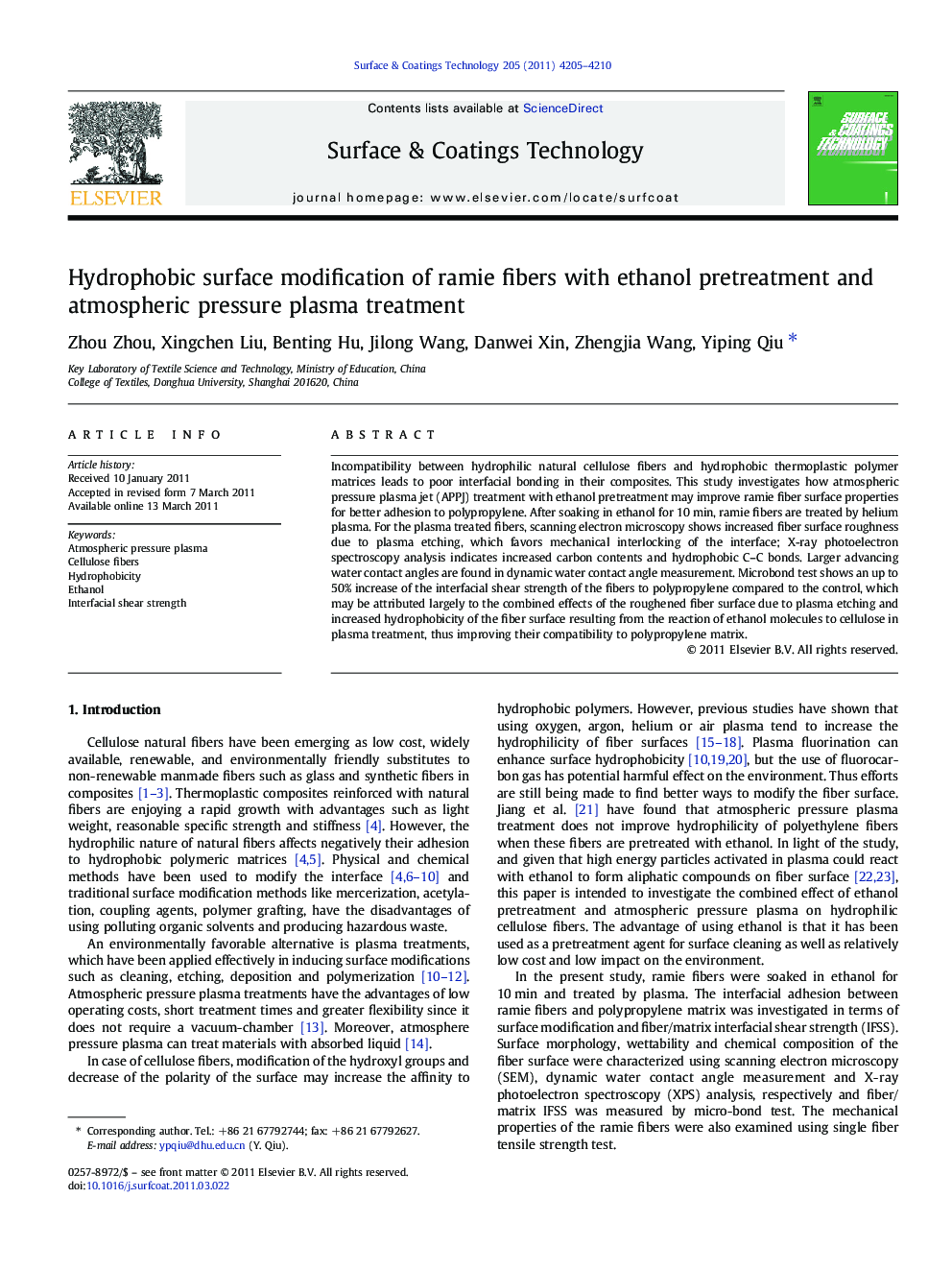| Article ID | Journal | Published Year | Pages | File Type |
|---|---|---|---|---|
| 1659260 | Surface and Coatings Technology | 2011 | 6 Pages |
Incompatibility between hydrophilic natural cellulose fibers and hydrophobic thermoplastic polymer matrices leads to poor interfacial bonding in their composites. This study investigates how atmospheric pressure plasma jet (APPJ) treatment with ethanol pretreatment may improve ramie fiber surface properties for better adhesion to polypropylene. After soaking in ethanol for 10 min, ramie fibers are treated by helium plasma. For the plasma treated fibers, scanning electron microscopy shows increased fiber surface roughness due to plasma etching, which favors mechanical interlocking of the interface; X-ray photoelectron spectroscopy analysis indicates increased carbon contents and hydrophobic C–C bonds. Larger advancing water contact angles are found in dynamic water contact angle measurement. Microbond test shows an up to 50% increase of the interfacial shear strength of the fibers to polypropylene compared to the control, which may be attributed largely to the combined effects of the roughened fiber surface due to plasma etching and increased hydrophobicity of the fiber surface resulting from the reaction of ethanol molecules to cellulose in plasma treatment, thus improving their compatibility to polypropylene matrix.
Research Highlights► Ramie fibers are plasma treated with ethanol pretreatment. ► The ethanol pretreatment is able to decrease O/C ratio and increase C–C bonds. ► Surface roughness and dynamic water contact angle increased after plasma treatment. ► Interfacial shear strength between ramie and polypropylene increased up to 50%.
